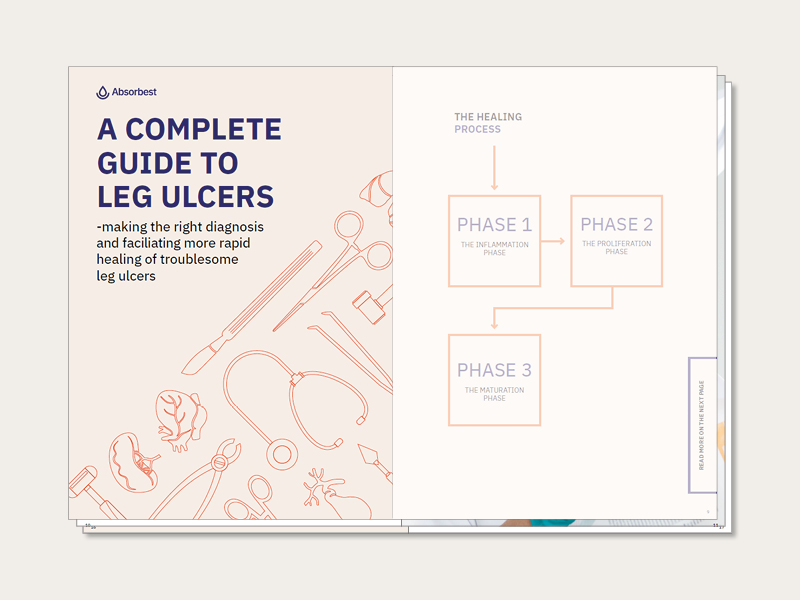Ulcers that are circular around the leg, a patchwork of multiple dressings, macerated skin, and fluid accumulation at the foot. These are problems that can occur with patients with large legs or larger exuding ulcers and can be avoided with the right solutions.
We have created a large wound dressing that covers extensive areas and manages a significant amount of wound fluid, providing you and the patient with a simpler and safer daily life.
The images below are from wound documentation where a large venous leg ulcer has been dressed with a wound dressing and compression therapy. With the legs in a downward position, the wound fluid has flowed down the leg over time and accumulated at the foot. The result was leakage through the bandaging and a damaged macerated foot.

Large wound dressings should be able to be applied around the entire lower leg, similar to a boot. This allows the dressing to absorb wound fluid around the whole leg and even the foot.
It is also essential for the dressing to have superabsorbent properties. A high-quality superabsorbent dressing encapsulates large amounts of fluid inside the core of the dressing and retains the fluid. This means the dressing does not leak under pressure, such as when using compression bandaging.
Therefore, you don’t need to use a patchwork of multiple dressings but only one superabsorbent dressing. It takes care of the wound fluid and reduces the risk of leakage through bandaging and clothing.

The images show how Absorbest’s 37×56 cm wound dressing is folded around the lower leg and secured with tape. In the example, an elastic tubular bandage is used for fixation, which can be replaced or supplemented with compression bandaging.
More application examples for other types of exuding wounds on different body parts.


DryMax Soft is designed to create a simple wound healing process and optimal healing environments to support clinicians giving quality care.

This complete guide to leg ulcers will help you to understand various wounds, what distinguishes these, and how they can best be treated during and after the healing process.